The History of C64 Remixes – Part One – The 1980s
Article by Warren Pilkington, Published: 13/03/2021
In this look back at the history of the Commodore 64 remix and the origins of how far the scene has developed, Warren Pilkington (Waz) looks back at the 1980s, and how the synthesizer brought along the first commercially available remixes, along with the fact that Commodore 64 musicians themselves would often do a cover or a remix of a game theme or demo theme too, adding to the origins. Take it away Waz!
After the initial early 1980s home computing boom, it was clear that despite the protestations of some including Sir Clive Sinclair himself, that many people were buying computers to play games. They were interested in being able to have some respite from the outside world, as growing up in the 1980s in the UK with mass unemployment and strikes as a backdrop was harrowing to be honest. And with those games came soundtracks – at first, a few subtle notes to get you into the game, but as programming skills developed and musicians started to come on board, it became a much more serious business to have a good soundtrack in your game to entice you in. Atari had the very good POKEY chip for their games and Commodore had the SID chip, both of which were able to produce so much goodness in the right hands.
DataHits
Perhaps the most widely known of those early efforts was the DataHits cassette tape, which was on sale in branches of the large newsagent chain WH Smith in the UK in early 1986. The A-side had the pieces of music and the B-side had a program for both the Commodore 64 and the Spectrum which was a database catalogue program for your games and programs that you owned, called SoftWhere? (you can see what they did there.) I doubt very much if anyone used the database programs - they were more interested in the five pieces of music being played, all based on the Commodore 64’s SID chip renditions.
In effect, Mupados (who created DataHits) used a Commodore 64, along with the Sound Sampler, Sound Expander and Music Studio hardware and utilities. It also used The TRON Digidrum, a digitised drum machine. You could also argue that the renditions here are the first variant of what became known later in the remix scene as SID and Drums. Perhaps more interesting was that three of the five pieces were actual cover versions in themselves – Mupados sensibly credited the original musical piece and respected the copyright here.
Of the five tracks, Rambo: First Blood Part II is perhaps the best one, and covers the loading music (complete with the Morse code at the start) and adds some extra bass lines as well as the drums, but also has been slowed down a little. Some might argue that adds to the atmosphere and is a notable take. The Never-Ending Story uses the Martin Galway rendition and adds some Oriental percussion as well as drums for added effect. Ghostbusters is okay, but the drums and synth just make it sound more like an 80s lounge version of the theme and less pop. Also, I miss the option of pressing the space bar to have the speech by Electronic Speech Systems playing as you could do on the title screen of the C64 version (and let’s face it, we all did that didn’t we?)
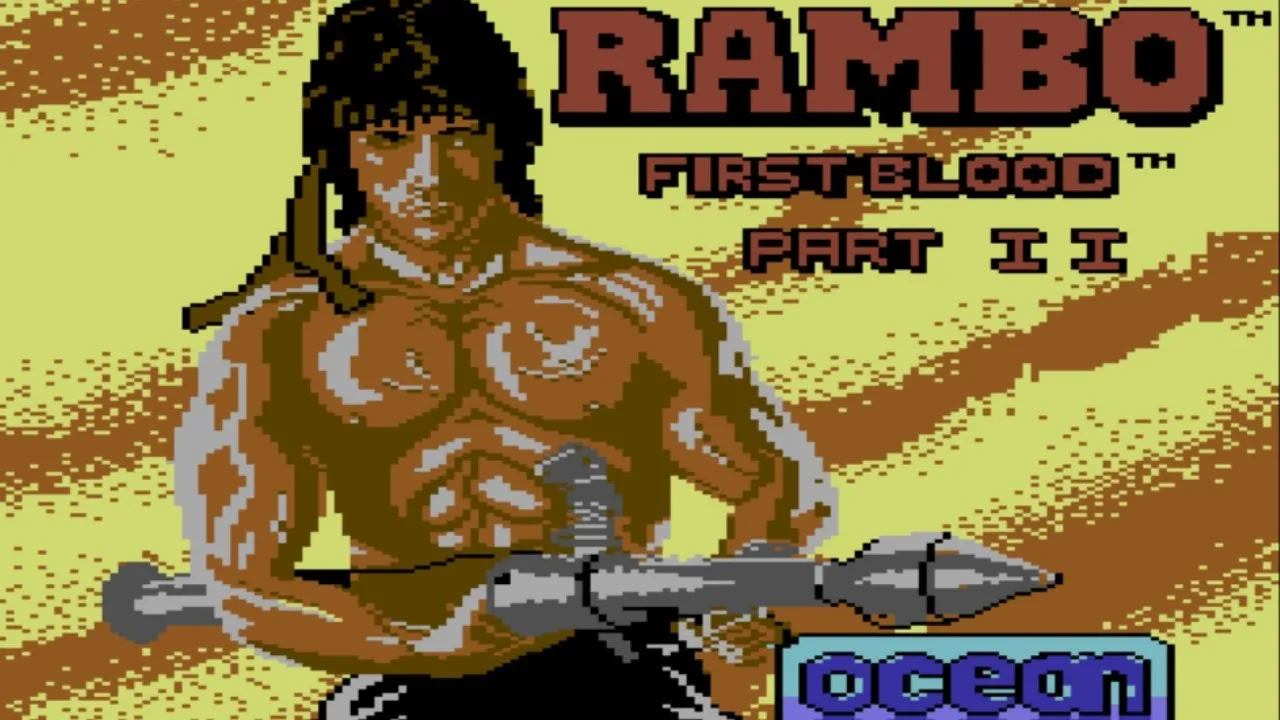
Crazy Comets of course is an iconic Rob Hubbard piece. The addition of some disco funk drums to proceedings and having some of the lead instruments effectively echo themselves in part is a nice idea, and keeps a funky element going. Somehow though I yearned back for the original as was, but of course kudos for experimenting and indeed making people aware of Hubbard’s brilliance. Lastly, the Hypersports Chariots of Fire rendition by Martin Galway gets a swirling bass line and some drums to add to things – it works reasonably well but sometimes, I got the feeling that less is more.
If you want to hear DataHits yourself, then James Stone’s excellent page has them all for download in FLAC format, along with a host of other goodies (some of which will also be referenced in this article). It has the inlay scans from DataHits too, making it an essential resource. Credit to him for that.
Thalamusic, Zzap! 64 Sampler
Rob Hubbard had of course been composing on synthesizers and keyboards for many years, and indeed some of his Commodore 64 work started out at sketches being played on those synths before being made into the soundtracks we know and still love today. Rob himself recalled that he sat at the keyboard recording himself for three hours outlining the sketches for what would become the themes for Dragon’s Lair II: Escape from Singe’s Castle.
Zzap! 64 magazine were putting together their first cover mounted cassette for their June 1987 issue, and Rob’s loading music for Sanxion had entered the readers’ music charts at number 7 in January 1987, reached number 1 in March 1987 and stayed there for nine months on the trot, remaining in the top three until May 1988. The popularity at the time of compiling the cassette certainly would have indicated how popular the piece was, and so Rob went to work, using a Yamaha CX5M, linked to an Akai S900 sampler with reverb and a Yamaha RX15 drum machine, coupled with some Fairlight samples, then all recorded on four track.
For many of the fans of the magazine, myself included, the version by Rob on the B side of the cassette was worth the price of the magazine alone that month. It gave an insight into how much the piece would sound with a wider range of instruments to work and breathe with, complete with the main hook line which today is still as spine tingling as ever. It also ventures into Jean-Michel Jarre territory in the middle section with some sampled spoken word that sounds very reminiscent of the Zoolook album, before bringing back the bass line and a drum hook to develop the final section nicely. I always liked the grittier Industrial sound of the C64 original, but this more synth-led rendition beings back so many fond memories of getting the magazine and playing the cassette. A lot of times. Many many times over, in fact. Still to this day an iconic cassette to own and to listen to. It also in many ways led the way for magazines to add cover mounted cassettes with either games or utilities on, with the bonus of Rob’s composition here being the icing on the cake.
Remixes of Game and Demo Tunes on the C64 Itself
Rob Hubbard also had a pioneering part to play in this. Two popular games that had been released, Crazy Comets by Martech and International Karate by System 3, both had excellent Hubbard soundtracks, with the former still being one of many people’s all-time favourites, it just had the right element of funky sound to play along with the game. For both of the game sequels, Mega Apocalypse and IK+, effectively it was deemed a good idea to do, if you like, a 12 remix of the original compositions, reflecting the nature of the singles chart and numerous 12
remixes being produced at the time. Rob himself reflects that the originals were better in both cases, but nonetheless it was fascinating to see how each tune was developed in its sequel, in both cases sounding more funky and especially with Mega Apocalypse having a killer middle extended section.
More Hubbard would be inspired by Gremlin Graphics, first for Thing Bounces Back, the sequel to Thing on a Spring, and Ben Daglish was asked to make his own interpretation of the classic music. In a way, it was suitably Ben, plenty of bouncy and fun sounds which certainly made for a nice interpretation and indeed to go off on a very nice and bouncy tangent that stands up well in its own right today. Then, Barry Leitch would also take on a Rob Hubbard original when a fifth game in the Monty Mole series, Impossamole, was released. Effectively it was Leitch’s own take on Monty on the Run (part of which of course is a version of the Devil’s Gallop from the Dick Barton radio programme) – however, on mastering, the game code overwrote part of the music data making it sound more out of tune than it should be. The version is fixed in HVSC, and you can see what Leitch was trying to do with it, and sort of worked. Magazine reviews most likely had the unfixed version present, hence the harsh reviews.
And talking of Barry, he had regularly been swapping disks with Graham Marsh (aka BOGG). BOGG had composed an excellent tune called Detergent, a version of which would end up on the Bug Byte game Hoodoo Voodoo. Later, Barry had sent some disks over to software houses, which included his own remake of Detergent, in his words: just to see how I would have taken his idea and ran with it myself.
Firebird had wanted to purchase it, and Barry mentioned it was based on a BOGG tune. In the end, after the game ICUPS had been released on the Thor label, and people had pointed out it was based on Detergent, agreement was made to give BOGG half the money for the tune, the other half to Leitch.
Other musicians, who had taken to the likes of Compunet in order to be able to show off their current creations musically, and to garner interest both from fellow users and software houses alike, would often take a tune that had been made in earlier music editors such as Electrosound, and then rewrite them in a more compact and updated player to feature in a game later on, the idea being that often these tunes would have gained suitable traction from those Compunet users originally – and a remix or remake was often effective especially if the composition itself was sound. A few cases of these, although there are many more, includes the below, remade for games:
- Jonathan Dunn’s Sigh of the Eye- the high score theme for the Ocean film licenced game Platoon
- Matt Gray’s Timed Out- the loading theme for Quedex by Thalamus
- Jonathan Dunn’s Jolly Rodger– the high score theme for Subterranea by Rack-It
- Steve Barrett’s Cry– the title theme for Trojan Warrior by Silverbird
- Jeroen Tel’s Koud He– the title theme for Savage by Firebird (samples also altered from the original which had the Dutch comedian Harry Vermeegen’s catchphrase)
When the demo group the Dutch USA Team decided to release their Music Assembler utility in 1989, Marco Swagerman (MC) decided that it would be sensible to bundle a few example tunes composed with the editor in order to demonstrate what you could do with the utility to create your own tunes. This included Marco’s versions of many Rob Hubbard themes, such as Action Biker, Flash Gordon, The Human Race (two themes, based on the subtune used in Goldrunner on the Atari ST and the subtune used in Game Killer), Crazy Comets (the Mega Apocalypse version), Nemesis the Warlock, Ninja, One Man and His Droid and The Last V8 amongst others. It also included versions of Martin Galway’s Parallax title theme and Noisy Pillars by Jeroen Tel too. In a way it at least got you started and had various ideas to begin with, and of course hearing some of your favourite game themes recreated was inspiration to do so yourself.
The C64 Megamixes
Of course, one other thing that became apparent during the 1980s, was the mega mix
, where you’d do many versions of a tune in one lengthy tune. This originally became popular with the likes of Stars on 45 and also Hooked on Classics, with even some bands having a go of a mega mix of their own songs, and in the late 1980s was taken to old 1950s and 1960s songs mixed together by Jive Bunny and the Mastermixers. Those sold millions too.
The C64 wasn’t exempt from this either, and again it was Compunet demos which led the way here. Before he became a game musician, Matt Gray was becoming well known on there, and his two Jukebox 64 demos (the original and Part 2) were effectively mega mixes of many C64 game tunes, some of which of course were in themselves covers. There are around 20 tunes covered in the first one, and 16 in the second, with plenty of nods to the likes of Rob Hubbard, Martin Galway, Chris Huelsbeck, David Whittaker, Michael Winterberg and Ben Daglish. Both were composed in Rockmonitor, which allowed the use of sampled drums to go with the melody and allow more room for the composition. They both still stand up well today, but I do prefer Part 2 overall.
Neil Baldwin (Demon) also released the demo Bomb da SID, which had the hook line from Bomb the Bass’ Beat Dis, with sampled drums and featuring versions of Rob Hubbard tracks such as International Karate and Sanxion along with a smattering of Martin Galway’s Comic Bakery theme too. Barry Leitch wasn’t to be outdone here either and had Rubbard Remix, which featured versions on Electrosound of Rob Hubbard pieces such as Monty on the Run, The Human Race, Commando and Zoids (effectively Ancestors by Synergy of course, but clearly took the Hubbard version for inspiration. Ben Hayes (Nutt ’67) also had a mega mix too, taking Jeroen Tel inspiration with versions of themes from Savage, Top Trucker, Alloyrun and the Chris Huelsbeck score from Katakis.
Not forgetting Jeroen and Michiel Soede, aka SoedeSoft, whose TrailMix demo was very popular around 1988. This was a quality mega mix, written in their own editor, which had versions of Crazy Comets, Knucklebusters, Delta, Star Paws and Wiz by Rob Hubbard, Quedex by Matt Gray, Cybernoid by Jeroen Tel, Last Ninja (Wastelands level) by Ben Daglish, and even Michiel’s own Magic Drums in there too.
The Early Years of the Amiga’s C64 Remixes
Naturally of course, as the Commodore Amiga started to become more widely used, with the Paula chip not only offering four channels of sound, but options around players and module type tracker editors which allowed the use of multiple samples also aiding considerably, it would be natural that those who were involved particularly in the demo scene started to make their own versions of C64 tunes, as they had grown up adoring those soundtracks themselves.
It was perhaps notable that Allister Brimble was amongst the first of these, releasing a number of demo disks during 1988 and 1989, mainly using music utilities available at the time such as Soundtracker as that allowed samples, to recreate and remake the C64 classics on the Amiga. Rob Hubbard Tunes, released in 1988, was a starting point and had versions of Warhawk, Sanxion, Delta, Mega Apocalypse, Star Paws, Commando and Lightforce. Later in 1989 The Best of Rob Hubbard, had sixteen different pieces including some from the first demo above, but also had the likes of Ace II, Knucklebusters (high score theme, not the 17 minute epic) and Thing on a Spring, and was definitely an early contender for a music demo that could be an album length compilation of remixes as well. Synth Sounds Volume 1 also had a version of The Wastelands in-game from The Last Ninja by Ben Daglish, which was quite an intriguing take, especially the arpeggios for its time.
Another person in the Amiga demo scene was Sebastian Lentfert (Zzzax) who also looked at creating different renditions. In the Music Mania demo by the Amiga Power Team, this brought together various mixes of C64 tunes, including Zzzax’s versions of Cybernoid (called Cybersong and using the main hook lines) and Auf Wiedersehen Monty. The demo group The Time Circle also put together the Expressions music disk, which featured a number of C64 remixes by Allister Brimble and Zzzax too – including good versions of Terra Cresta and Ghosts n Goblins by Zzzax, and Green Beret’s title theme along with Ocean Loader 2 by Brimble, so a fair bit of Martin Galway remixed in that demo to get the teeth into.
There was also Frederic Hahn (Fred) who became well known as a demo scene musician for the excellent Dear Rob
tune – well worth checking out. This is on the Soundmachine 2 demo released by Ackerlight, along with a version of Ghosts n Goblins. Soundmachine 3 has Warhawk (aka Proteus) playing too. You can get all three in the series here. Fred also had an excellent version of Cybernoid II in 1989 which happened to feature on the first Amiga demo released by Triangle 3532. And the link there? No less than Kwed of remix.kwed.org fame, who was then known as Qed when in the group.
One notable, still active remixer is Eike Steffen (Romeo Knight) who of course started his remixing career on the Amiga. The 1988 demo Classic Demo had his renditions of Commando, Monty on the Run (high score), Knucklebusters (high score), Warhawk, and Formula 1 Simulator. He would later produce more in the 1990s but listening back to those renditions really showed promise and composition too.
Other notable C64 remixes released on demos in 1988 and 1989 included:
- Chip Music (Slipstream)– has versions of Delta and Suicide Express by Matt Simmonds (4-Mat)
- Sunriders Music 7 (Suntronic)has versions of Monty on the Run (high score) and Arkanoid (game complete) by Felix Schmidt (TSM)
- The Muzzax series of music demos by Byterapers has versions of To Be on Top (1), IK+ (2), Arkanoid and Giana Sisters (4) by Speed-Head and Sanxion (3) by Polo.
Of course, this is only scratching the surface of what was becoming a flourishing Amiga demo scene, which would continue onwards into the 1990s – which we’ll look at in a future article. Nonetheless it showed that even in the early years, the Commodore 64’s amazing soundtracks proved to be inspirational for those wishing to compose themselves, and whether you were using a C64 to remake a popular tune, or using all forms of samples on the Amiga to do the same, or a MIDI keyboard attached to an Atari ST with suitable composing software, the possibilities existed.
Also, I have to say, had I known about the existence of the Datahits tape and the Zzap Sampler back in the 80's when I still lived in Hungary, I'm sure I would've killed for a copy! 😊 And now here we are, decades later, and we can download it all for free in just a few seconds, anywhere in the world. Makes you wonder, doesn't it?…
Also, I need to go back and listen to Bomb da SID and Trailmix. Can't recall the Jukebox 64 demos, so that's going to be mandatory listening as well.


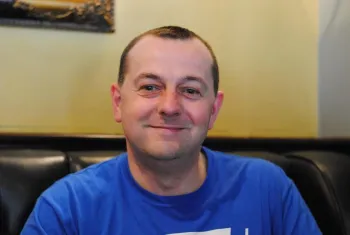
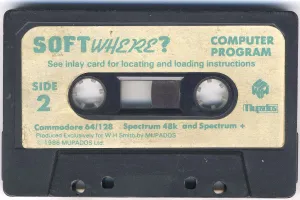
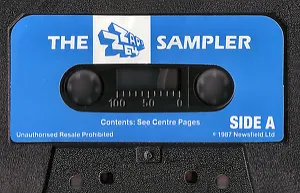
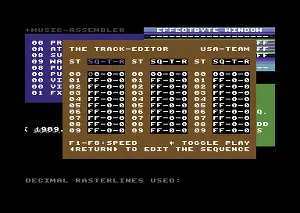










Comments